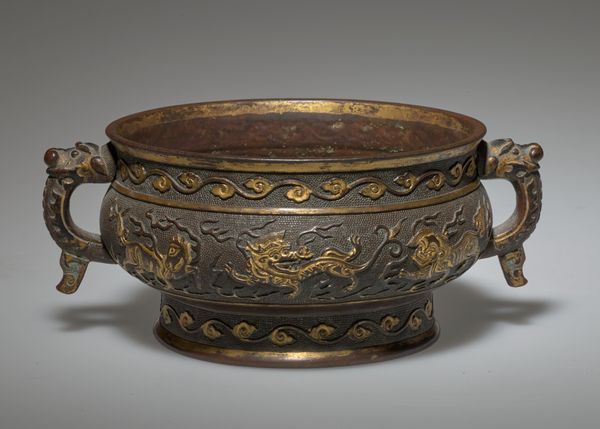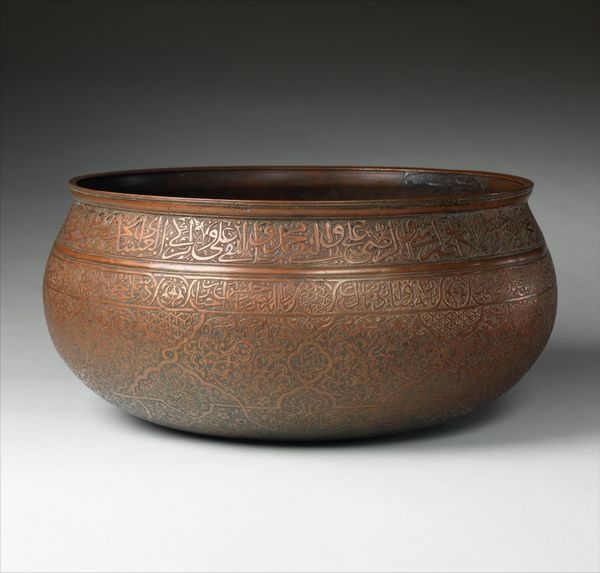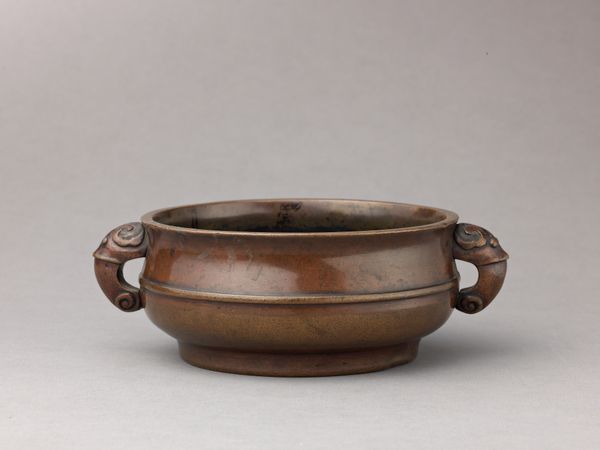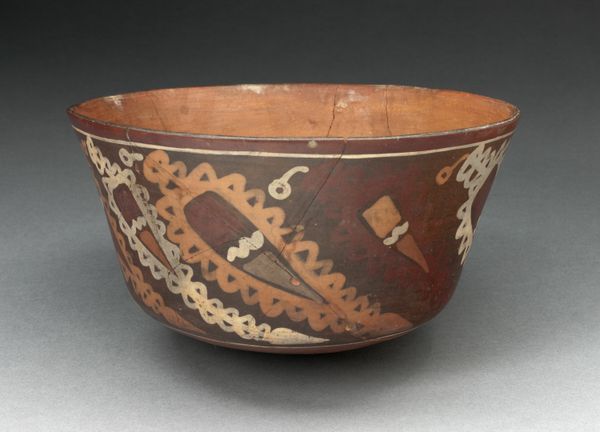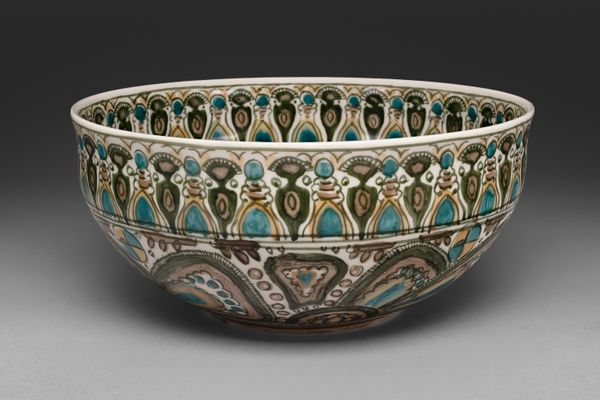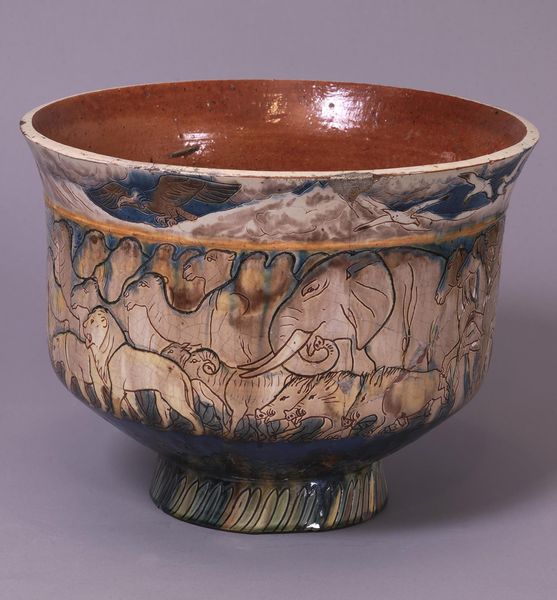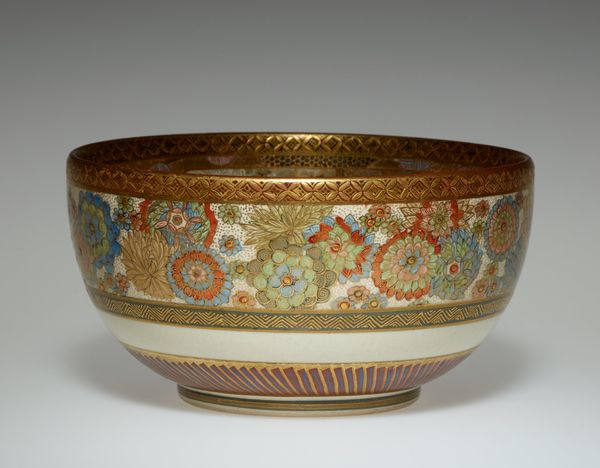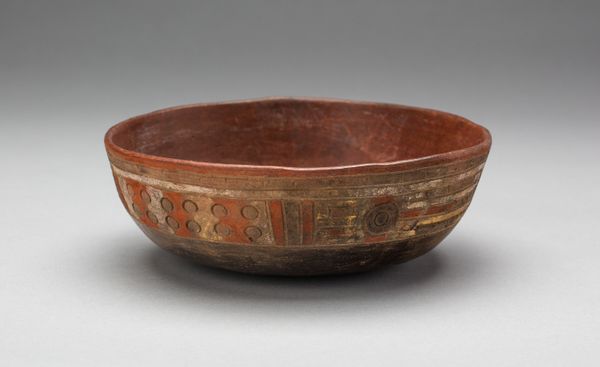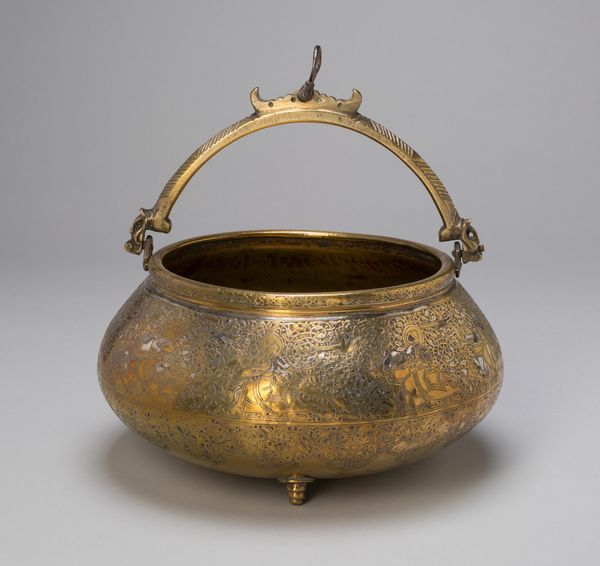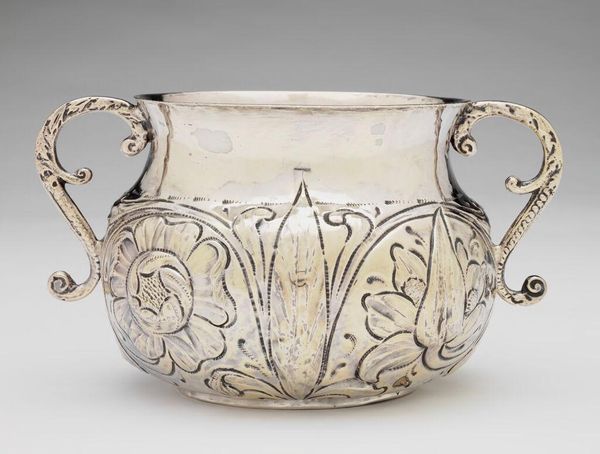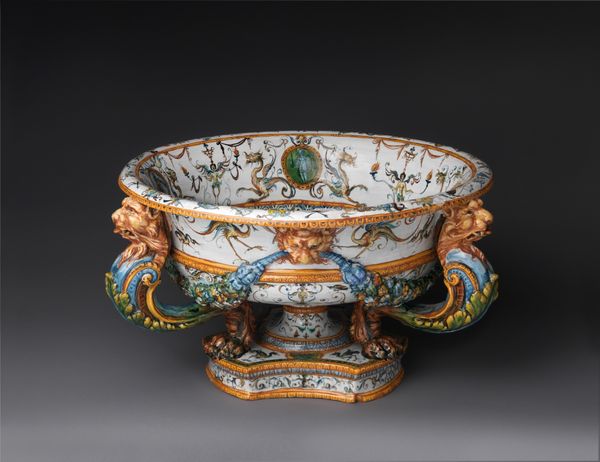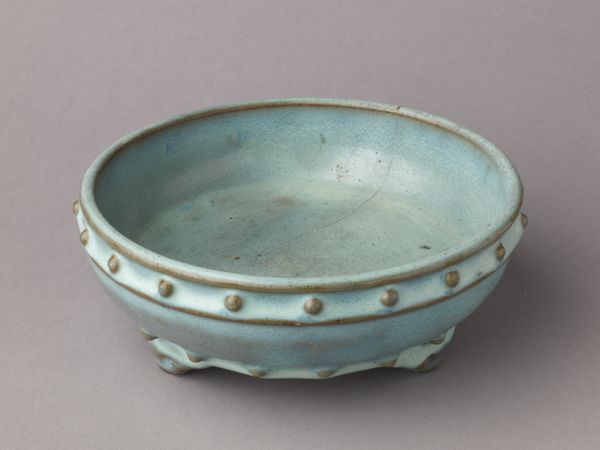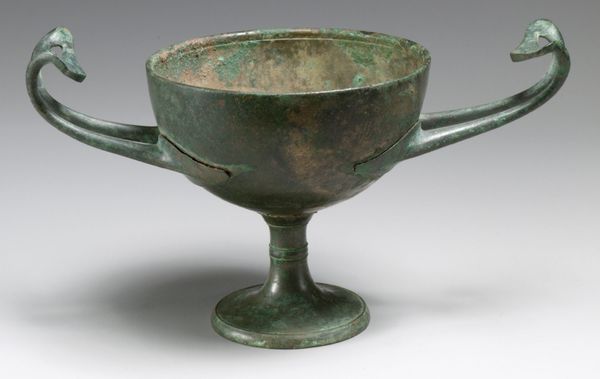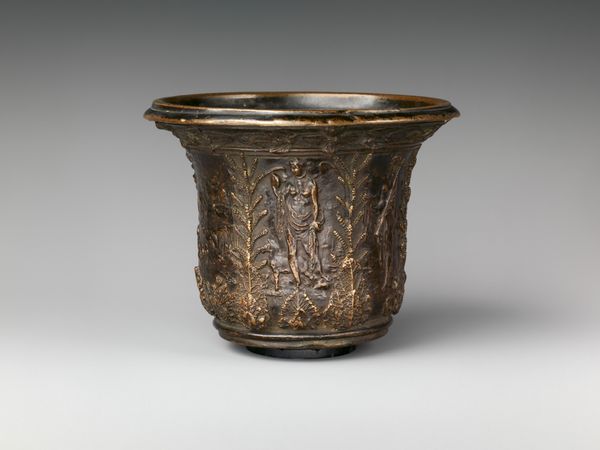
ceramic, bronze, sculpture
#
asian-art
#
ceramic
#
bronze
#
stoneware
#
sculpture
#
ceramic
#
decorative-art
Dimensions: 3-5/8 x 8-3/4 x 5-13/16 in. (9.2 x 22.2 x 14.8 cm)
Copyright: Public Domain
This bronze censer was crafted by Zhu Zhenming around 1600. Notice the dragon handles and the intricate, gilded figures that adorn its surface, motifs that are far from simple decoration. The dragon, a potent symbol in Chinese culture, embodies power, wisdom, and benevolence. As we trace this serpentine figure through history, it appears in myriad forms, from the Babylonian Tiamat to the dragon slain by Saint George. Each iteration carries echoes of the past. Consider, too, the vessels from antiquity: from the Minoan rhyton used for ritual libations to the medieval reliquaries containing sacred relics. This censer is not merely a container, but a vessel laden with cultural memory, each curve and contour a testament to the enduring human need to connect with the divine. It stirs in us a primeval urge to transcend the mundane, engaging with viewers on a subconscious level. We are reminded that symbols follow a non-linear, cyclical progression, resurfacing and evolving across different contexts.
Comments
minneapolisinstituteofart almost 2 years ago
⋮
This gilded bronze censer is shaped like a Bronze Age ritual vessel form known as gui. It is cast and carved in relief, displaying a wave pattern in the main body, with eight mythological ocean animals, including sea horse, lion, elephant, and dragon, all accented with gilding. The center of the base is inset with a large, rectangular cartouche containing a six-character seal-script mark, which reads, “Made by Zhu Zhenming of Yunjian.” Yunjian is present-day Songjiang near Shanghai, also the hometown of metalwork master Hu Wenming. Zhu worked in Hu’s workshop, where he completely assimilated the master’s style and then became an independent artisan producing bronze objects that appealed to scholars’ tastes.
Join the conversation
Join millions of artists and users on Artera today and experience the ultimate creative platform.
